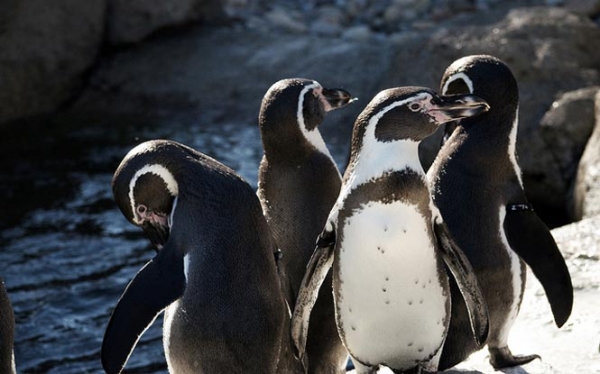Jul

The Penguins of South America
When they think of penguins, most people imagine the beautiful black birds waddling around an ice sheet in Antarctica (or an apartment in New York City, for those fans of the movie Mr. Popper's Penguins). Few people know that there are actually 7 species of penguins living in South America, 3 of which are sadly endangered.
The northernmost penguins on the continent reside in the Galapagos Islands which lie off the coast of Ecuador. South America's most famous species is the Humboldt penguins, which live along the coasts of Peru and Chile. However, the Pacific coast isn't the only place where penguins have found a home.
Magellanic penguins, Gentoo penguins and Southern Rockhopper penguins are found in the Falkland Islands, a British Overseas Territory and veritable penguin paradise off the east coast of Argentina. Magellanic penguins can also be found on the mainland, on both the west coast of Chile and the east coast of Argentina.
The Humboldt, Southern Rockhopper, and Macaroni penguins (which live at the continent's southern tip) are all considered to be in peril. Take a minute to learn about these marvellous species, what's threatening them and how they're being preserved.
Humboldt Penguins
Humboldt penguins are the opposite of what you think a penguin should be. They live in weather that can reach a scorching 108 degrees Fahrenheit, so over time they have developed some bare areas on their bodies to let heat escape easily.
They can reach a speedy 30 miles per hour when swimming and hunting underwater. Their favourite fish to dine on is anchovies, but unfortunately these are a rare delicacy nowadays due to overfishing. Food is especially scare during El Nino phenomena, when the warmer-than-normal oceans drive lots of species away.
Sadly, they're also threatened by humans. To counteract Humboldt hunters, Chile declared a 30-year ban on hunting the penguins in 1995. Mining for guano (which is used in fertilizer) has also been a threat to the penguins, and Peru has tried to counteract this by creating several reserves where mining for guano is controlled strictly.
Despite these efforts, the Humboldt penguin remains in a precarious position. In 2012, it was estimated that less than 10,000 Humboldt penguins existed in the wild, and these numbers could possibly be as low as 3,000.
Southern Rockhopper Penguins
The Falkland Islands hold over one third of the population of these small but charismatic penguins. These curious creatures lay two eggs in a shallow depression in a cliff; the first one is notably smaller and if the baby hatches, it doesn't usually live. Outside of breeding season, the penguins don't necessarily stick around the islands. As migratory animals, some choose to stay relatively close while others travel thousands of kilometres from April to October.
While it is estimated that over a million of these captivating creatures lived in the Falklands before the 1930s, the population has dropped significantly since then and experts don't think it will ever reach its previous heights again. The penguins were severely threatened by a mass famine which wreaked havoc on the population in 1985, and then again in 2002 by a harmful algae bloom.
Though the Southern Rockhopper is listed as vulnerable on the IUCN Red List, things have been looking up in recent years, as conservationists have observed a rise in the population starting a couple years after the algae bloom.
Macaroni Penguins
Red-eyed birds usually found on waterside cliffs, they are notably colourful for penguins and dine on mostly krill. They aren't just bound to the tip of South America; they also breed on numerous islands off of Brazil, South Africa, Australia, and New Zealand.
While they are not endangered, Macaroni penguins were also labelled as vulnerable by the IUCN Red List. Estimates suggest that there are around 9 million breeding pairs of these birds left, though their population has declined by about one third over the last thirty years.
And while they're not hunted like their Humboldt brethren, humans do hold responsibility for their decline in numbers. Alongside disease epidemics, it is largely warming oceans, overfishing (especially of krill) and environmental pollution which threaten these penguins.
Are you passionate about helping some of South America's unique species which are considered vulnerable or endangered? Check out the volunteer opportunities to see how you can help in conservation efforts across the continent!







Sophia Wescoat
Added 20th June 2022
Good job